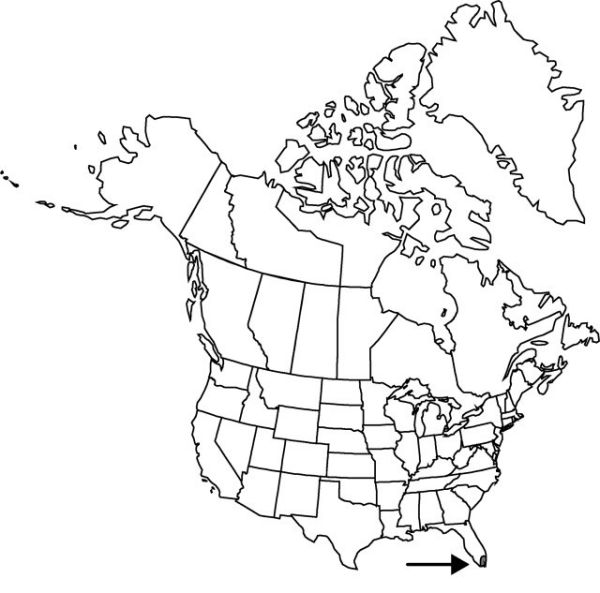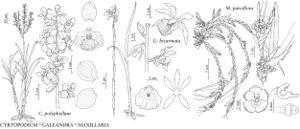Galeandra bicarinata
N. Amer. Native Orchid J. 6: 78, fig. 1. 2000.
Plants apparently saprophytic, leafless at anthesis, to 60 cm. Roots numerous, white, thick, fleshy. Stems abbreviated rhizomes; pseudobulbs subterranean, cormlike, ovoid, covered with scales. Leaves: petiole to 15 cm; blade 3-ribbed, linear-lanceolate, 25 × 3 cm. Inflorescences borne after leafy shoot, sometimes branched, to 20-flowered, 100 cm, base with several small, imbricating bracts; peduncle purple, with several leaflike bracts to 7 cm; rachis green; floral bracts to 2 cm. Flowers resupinate, light green; sepals spreading, oblanceolate, keeled, to 2.4 × 0.7 cm; petals spreading, oblanceolate, slightly oblique, 2 × 0.7 cm; lip subquadrangular, slightly 3-lobate at apex when spread, 2 × 2.5 cm, base produced into nearly cylindric, slightly hooked, short, obtuse spur, margins crenate, covered with short trichomes, apex reflexed; disc with a narrow callus, covered with short trichomes, bicarinate, keels merging toward base, diverging toward apex; column erect, slightly arcuate, 3-angled, to 1 × 0.3 cm, with prominent foot; anther green, cucullate, acute, the margins and apex papillose, 2 × 0.3 cm; pollinaria with no discernible viscidium or stipe; pollinia 2, yellow, spheric, 1 × 1 mm; pedicellate ovary to 2.5 cm. Capsules pendent, ellipsoid, 3 cm.
Phenology: Flowering fall.
Habitat: Hammocks
Elevation: 0–100[–1500] m
Distribution

Fla., West Indies (Cuba).
Discussion
Galeandra bicarinata was previously identified as G. beyrichii Reichenbach f., a similar species with four pronounced keels on the lip.
Selected References
None.
